Windows 11 requires free space on an HDD or SSD to be installed without interruption. If your computer does not have the required space on the disk, you will not be able to install or update Windows 11. Some users get the error “Setup needs space to update Windows 11” while updating Windows 11. If you get this error, use the solutions provided in this article.
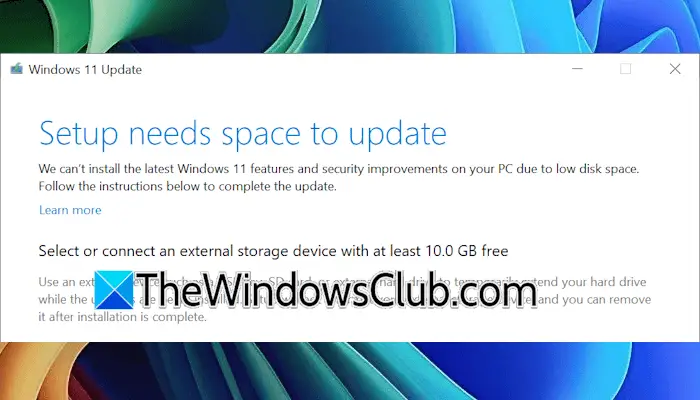
Fix Setup needs space to update Windows 11/10
If you see the “Setup needs space to update” message when trying to install or update Windows 11/10, take these steps to free up disk space:
- Use Disk Cleanup
- Disable Page file and Hibernation
- Delete System Restore Points and disable System Protection
- Delete unused or inactive profiles
- Miscellaneous steps to free up space on the C drive
Let’s start.
1] Use Disk Cleanup
Disk Cleanup is a built-in utility in Windows 11 that helps users free up space on their hard drives by removing unnecessary or junk files. You can launch it through the Windows 11 Search bar. Now, select the Clean up System Files option in Disk Cleanup to relaunch the tool. Select C drive and click OK. This time it will scan your system files.
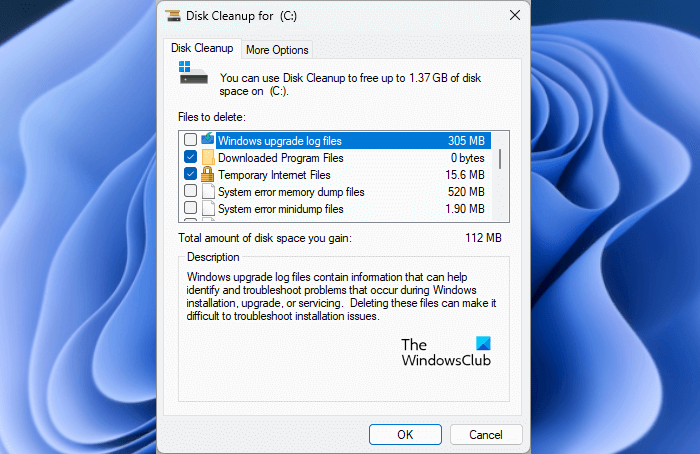
Some options are selected by default. You can also select more options to free up space on C drive, such as Windows Upgrade log files. If System error memory log files are taking more space, you can also delete them. Deleting these files does not cause any negative impact on your system. However, after deleting the memory log files, you will not be able to troubleshoot the BSOD errors.
Now, check if you can update Windows 11.
2] Disable Page file and Hibernation
If the error still occurs while updating Windows 11, this means you need to free up some more space on the C drive. Now, in this case, you can disable the Page file and Hibernation on the C drive. Windows 11 uses the Page file to manage virtual memory. Therefore, it should be enabled. Disabling Hibernation and the Page file will free up space on the C drive. After updating Windows 11, you can enable the Page file again.
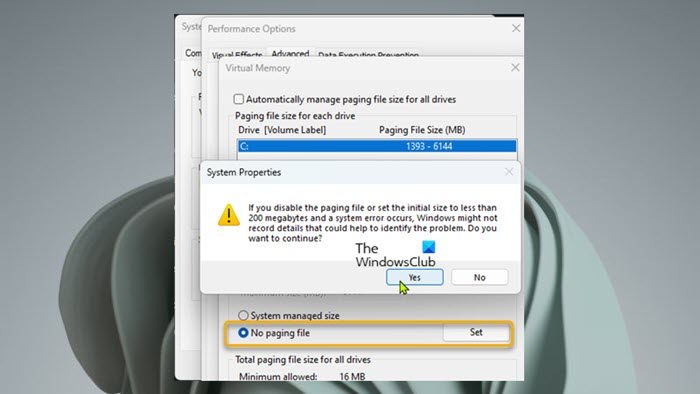
To disable the Page file, follow the steps provided below:
- Open Windows 11 Settings.
- Go to System > About.
- Expand the Device Specifications tab and click Advanced system settings. The System properties window will open.
- Select the Advanced tab in the System Properties window.
- Click Settings under the Performance section.
- Go to the Advanced tab and click Change under the Virtual memory section.
- Uncheck the Automatically manage paging file size for all drives checkbox.
- Select the C drive.
- Select the No paging file option and click Set.
- Click OK.
Now, check if you can update Windows 11.
3] Delete System Restore Points and disable System Protection
System Restore points also take up space on the C drive. These points are used to restore your system to the previous working state if any problem occurs. Open the System Restore tool to see how much space the System Restore Points are taking on your C drive. Click on Windows Search, type Create a restore point, and select the matching result from the search results. Under the System Protection tab, select the C drive and click on the Configure button. You will see the current usage of restore points.
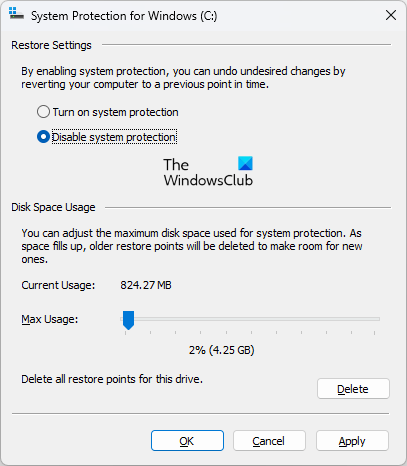
If the restore points are taking up a huge space on your C drive, you can delete them to free up space. To delete the restore points, click Delete. Alternatively, you can turn off the System Protection. This action also deletes all the restore points stored on the C drive.
Disabling System Protection does not harm your system. The only disadvantage is that you cannot restore your system to a previous point in time if any problem occurs.
Update Windows 11 and see if the error occurs this time. After updating Windows 11, enable the System Protection again.
4] Delete unused or inactive profiles

Windows 11 allows users to create multiple user profiles. All the user profiles have a separate folder to store their data separately. These folders exist on the C drive. Hence, all user profiles consume space on the C drive. If unused or inactive user profiles exist on your system, delete them.
5] Miscellaneous steps to free up space on the C drive
Empty Recycle Bin to free up some more space on the C drive. Also, delete temporary files. Open the Run command box, type %temp%, and click OK. This will open the Temp folder. Delete all the files it contains. You can also use a third-party utility to scan your C drive and delete unnecessary files.
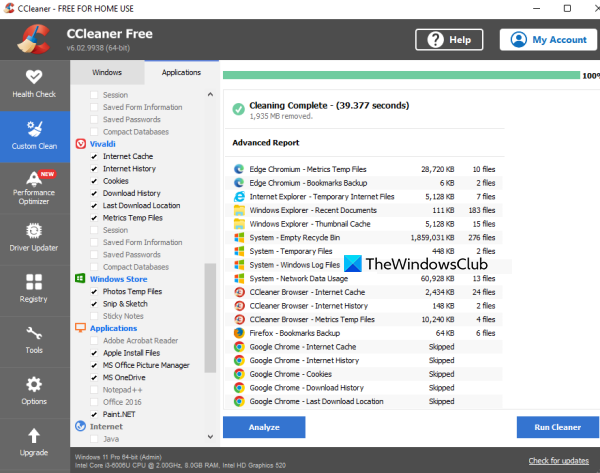
Open Windows 11 Settings and go to Apps > Installed apps. Now, scroll down the list slowly and locate the programs that you do not use. Uninstall those programs.
That’s it. I hope this helps.
How do I free up 10 GB of space on Windows?
You can try different methods to free up space on your hard disk. However, whether you can free up 10 GB of space depends on several factors, such as the size of the different files you have on your hard disk, the partition on which you want to free up space, etc. If you want to free up space on the C drive, you can delete some files but not all files. To free space on a hard drive partition other than C, you can move data to an external storage device.
How to fix We can’t tell if your PC has enough space to continue installing Windows 11?
The error “We can’t tell if your PC has enough space to continue installing Windows 11. Try restarting Setup” usually occurs due to a lack of disk space for Windows 11. Delete junk files and uninstall unwanted programs to free up some space on your C drive.
Read next: How to fix the “Windows needs more space” error.
Leave a Reply